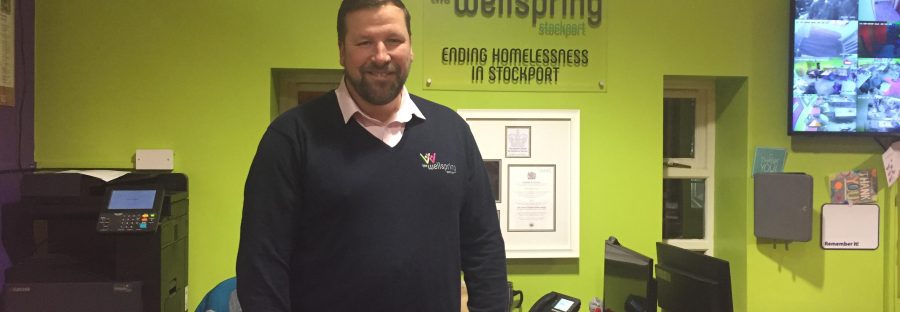Burnham’s plan to end rough sleeping shows early signs of success but charities are lacking resources
- Earlier this year Andy Burnham announced a radical plan aiming to end rough sleeping by 2020.
- Jonathan Billings, Chief Executive Officer at the Wellspring in Stockport, spoke to the Northern Quota about the proposed target and whether it is achievable.
- Billings says: 'The goal is achievable, but will be very difficult. We will need a lot more services and resources for charities and organisations that do grassroots work with people who are on the streets'
Earlier this year Andy Burnham, Mayor of Greater Manchester, announced a radical plan aiming to end rough sleeping by 2020. While this may have seemed optimistic to some, recent figures from the GMCA are showing early signs of success, with around 172 people taken off the streets on Monday 19 November through the Mayor of Greater Manchester’s A Bed Every Night scheme. In total, 278 people have been helped off the streets since the start of the campaign on November 1, and over the next week the amount of provision across Greater Manchester will increase even further.
The scheme is in place at a number of organisations in Greater Manchester, including Justlife, Booth Centre, Coffee4Craig and The Wellspring. A Bed Every Night will run over the winter period until the end of March, and will ensure that the most entrenched of rough sleepers can be supported to help them reintegrate into society.
Jonathan Billings, Chief Executive Officer at the Wellspring in Stockport, spoke to the Northern Quota about the proposed target to end rough sleeping in Greater Manchester and whether it is achievable.

The Wellspring is a resource centre for homeless and disadvantaged people. It’s a project that’s open every single day of the year, with around 100-150 people a day coming through the door. Their staff include social workers, drug and alcohol rehab workers, mental health specialists, and people who do one to one work with those in need. They address things like housing problems, benefit issues, get people into jobs, address addictions, provide educational services and a daily meal service.
Anyone is welcome to use the facilities at The Wellspring, as long as they are over the age of 18. Their main users are people who are homeless or are at risk of becoming homeless. They help a broad spectrum of people, including refugees, travellers, asylum seekers, sex workers, young people, old people, and people with mental health and learning disabilities.
With regards to Burnham’s 2020 target, Billings says, “The goal is achievable, but will be very difficult. We will need a lot more services and resources for charities and organisations that do grassroots work with people who are on the streets. There’s about 300 people who have gone into A Bed Every Night since the start of November, to spend somewhere safe and warm off the streets. One of the good things about the scheme is that people are making their way from these to temporary accommodation or their own accommodation, taking steps towards independence.”
“However, there are still quite a lot of people sleeping rough on the streets, which is concerning. Lots of these people can be quite challenging. Homelessness and rough sleeping is just a symptom of something else, so putting them in accommodation doesn’t always solve the problem. It is important that those issues are addressed, that’s the hard bit.”
The number of people who are at risk of becoming homeless is a rising figure. Welfare Reforms, the reform of the benefits system and universal credit are all contributing towards rising numbers in people becoming homeless. The cuts under austerity measures to mental health teams, counselling, drug and alcohol facilities have affected the organisations that work to tackle homelessness, so in order for real change to happen more resources will be needed to reverse these effects.


